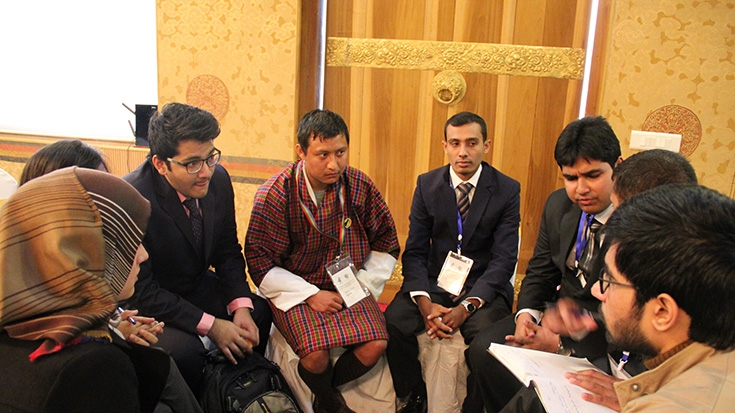Thimphu, December 31, 2014—The 11th South Asia Economic Students’ Meet (SAESM) was held in Bhutan to share research and discuss ideas about improving regional cooperation between South Asian countries. The meet brought together 80 of the top economics undergraduate students from across South Asia who met and interacted over a week-long packed schedule of events including paper presentations, panel questions, team based competitions, and exploration of the host country.
“SAESM is an excellent opportunity for young people in South Asia to engage with one another and come up with creative solutions to shared challenges,” said Kaushik Basu, World Bank Chief Economist and closing keynote speaker of the event. There are remarkable similarities between countries in South Asia and the event is a contribution towards a global mission of peace and intellectual development. I challenge the students to be agents of change.”
Despite shared languages, history, culture, and borders. South Asia remains one of the least integrated regions in the world. The cost of weak regional cooperation negatively impacts every country. Increased cooperation holds many opportunities for development gains for all countries, yet many barriers prevent greater regional cooperation. For instance, participants from Pakistan had layovers in Karachi, Dubai, and Kathmandu before reaching Paro in Bhutan due to the lack of connectivity and visa access, greatly increasing the length and cost of the journey.
“South Asia is an incredibly dynamic, young but still comparatively poor region with 1.7 billion people. Intra-regional trade can easily increase from $28 billion to $70 billion annually if barriers to trade with neighbors are reduced and this is only one example of how greater cooperation can increase prosperity,” said Salman Zaheer, World Bank Director for Regional Integration. “With more than 12 million young people entering the labor force every year, South Asian countries should utilize regional cooperation as a development strategy for the region to reach its full potential.”
SAESM grew out of a request in 2004 from a few Pakistani students to their visiting Indian economics professor of their desire to visit India. Having grown from a four countries to seven, SAESM has convened almost 1,000 economic students from across South Asia, inclusive of Afghanistan, Bangladesh, Bhutan, India, Nepal, Pakistan and Sri Lanka.
“It is only through accelerated regional integration that South Asia can find a place for itself in the emerging Asian century. SAESM 2014 helped the young men and women from South Asia to become instruments of greater cooperation,” said Sanjeev Mehta, Economics Professor and the Bhutan SAESM Coordinator.
Most of the students, potential future thought leaders of South Asia, have never had the opportunity to interact with their peers from other South Asian countries and consistently highlighted how friendships were made perceived differences were quickly bridged.
“The conference gave us lifelong bonds. The familiarities of the cultures were also striking. This was by far the most memorable experience of my undergraduate experience,” said student Simoni Jain from India.
As students return to their countries with a sense of camaraderie with their peers from neighboring countries, they are reminded that they should strive to keep and spread the spirit of SAESM to their homes.
“It’s up to you to make a difference. Please don’t carry the baggage of older generations with you. Please solve them,” said Qamrun Nehar Taslim, country coordinator from Bangladesh said.

